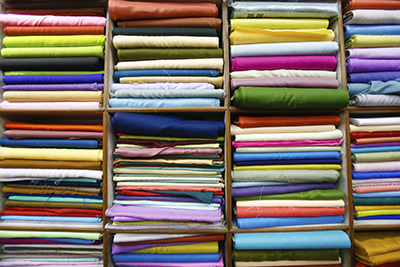What Hippocrates Health Institute Has to Say About Those New Clothes You Just Bought
This article is a MUST READ! It is one thing to be poisoned with all the pesticides and other chemicals they spray on food, but chemicals in brand new clothes… The skin just happens to be the largest organ, of course it depends on a number of factors such as concentration, duration of contact, solubility of the irritant and the physical condition of the skin. But still, formaldehyde in clothes. Food, technology and clothes are all coming out of China. There is no escape to all these toxins we are exposed to SO BEWARE!
Most Common Chemicals in Clothes
You are shopping for a new dress or a new suit and you want a stain resistant and wrinkle resistant fabric. What are you really putting on your skin when you buy such a product? What health considerations are you sacrificing in the name of convenience? Formaldehyde, a ‘frank’ carcinogen shown in lab testing of animals to cause cancer, is but one of the toxic chemicals used in these fabrics. Most clothing is now manufactured in China where permissible levels of formaldehyde are higher than EPA standards for U.S manufacturers.
Children are particularly vulnerable to chemical sensitivities triggered by the clothing they wear, especially if they are required to wear uniforms during the school year. Many school uniforms are coated with a family of chemicals called PFC’s that give fabrics stain resistance and the ‘non-iron’ wrinkle resistance often found in school trousers and skirts. These perfluorinated compounds have been classified as probable cancer-causative agents by the U.S. Environmental Protection Agency.
As clothes containing these chemicals become worn with repeated washings and wear, the chemicals migrate from the fabric and become particles that can be absorbed or inhaled by children. “Without knowing it, parents are exposing their children to toxic chemicals in clothing that could have serious future consequences for their health and the environment,” declared Dr. Richard Dixon, head of the environmental group WWF Scotland, in a 2004 media alert. “Children are usually more vulnerable to the effects of chemicals than adults, so the presence of these substances in school clothing is particularly alarming.”
Studies done by the Environmental Working Group in the U.S. have detected PFOA, one of the common Teflon-like chemicals, in the blood of 96 percent of all Americans tested. Another study by the same organization in 2004, using umbilical cord blood donated by U.S. hospitals, found the eight types of perfluorochemicals in nearly all of the samples, demonstrating that mothers absorb the chemicals during every day activities and then transfer the toxins directly into the fetuses they carry.
The long term health consequences of this contamination in the unborn remains in the realm of speculation for two reasons: these contaminants are now so prevalent in humans and wildlife that they can’t be separated from the presence of other toxic chemicals being absorbed simultaneously; and these chemicals were only introduced into clothing and other consumer products within the past few decades, so we don’t have much evidence generated by a lifetime of use. But we feel assured that PFC’s absorbed from clothing and other sources can’t be healthy for children or the rest of us.

















